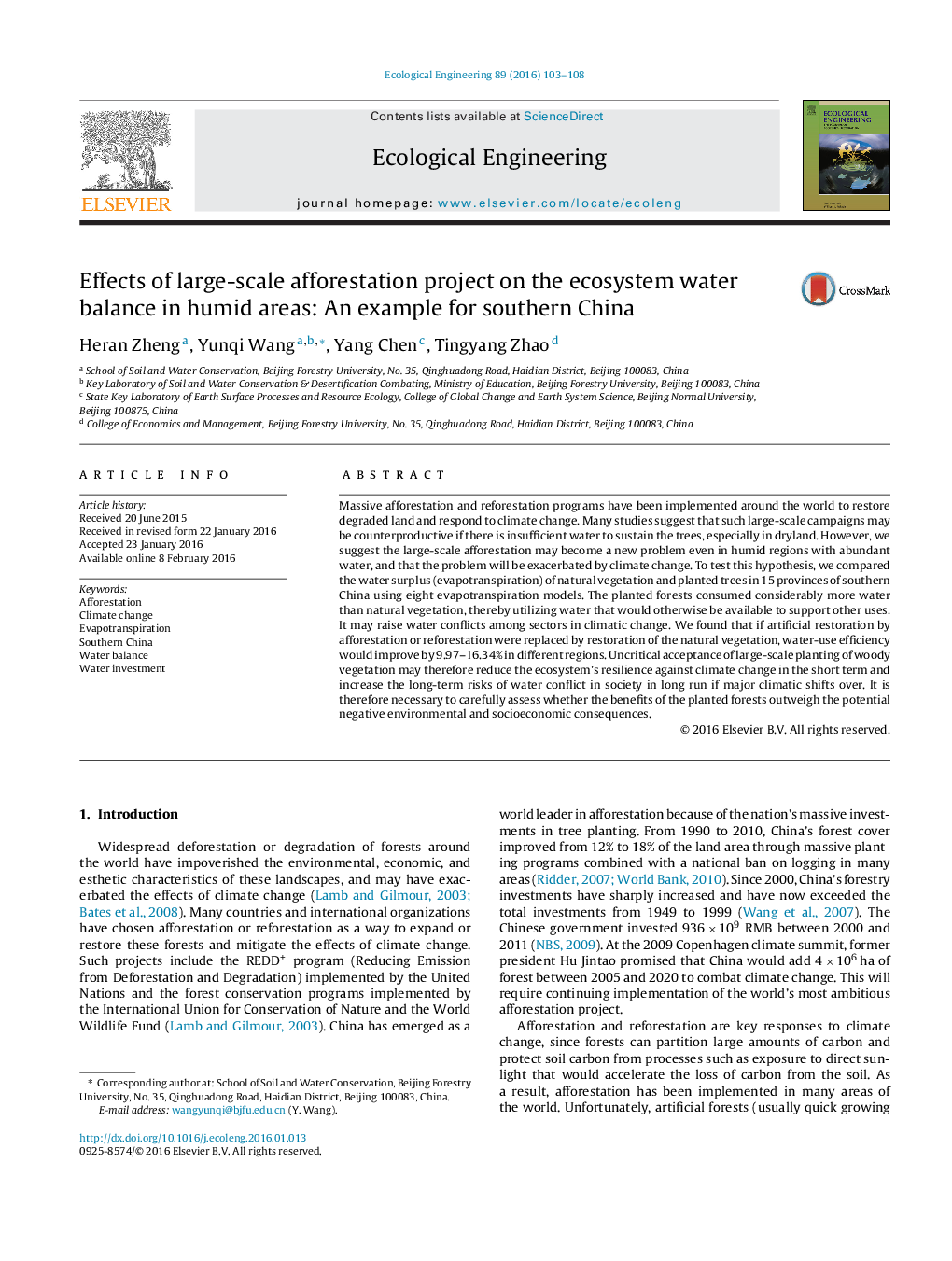| Article ID | Journal | Published Year | Pages | File Type |
|---|---|---|---|---|
| 4388751 | Ecological Engineering | 2016 | 6 Pages |
•We evaluate the evapotranspiration of planted tree and natural vegetation in south China based on eight models.•Afforestation in China humid region may raise the water conflicts in the light of high climate change.•Afforestation and reforestation project should pay more attention on water balance with other the social sectors.
Massive afforestation and reforestation programs have been implemented around the world to restore degraded land and respond to climate change. Many studies suggest that such large-scale campaigns may be counterproductive if there is insufficient water to sustain the trees, especially in dryland. However, we suggest the large-scale afforestation may become a new problem even in humid regions with abundant water, and that the problem will be exacerbated by climate change. To test this hypothesis, we compared the water surplus (evapotranspiration) of natural vegetation and planted trees in 15 provinces of southern China using eight evapotranspiration models. The planted forests consumed considerably more water than natural vegetation, thereby utilizing water that would otherwise be available to support other uses. It may raise water conflicts among sectors in climatic change. We found that if artificial restoration by afforestation or reforestation were replaced by restoration of the natural vegetation, water-use efficiency would improve by 9.97–16.34% in different regions. Uncritical acceptance of large-scale planting of woody vegetation may therefore reduce the ecosystem's resilience against climate change in the short term and increase the long-term risks of water conflict in society in long run if major climatic shifts over. It is therefore necessary to carefully assess whether the benefits of the planted forests outweigh the potential negative environmental and socioeconomic consequences.
